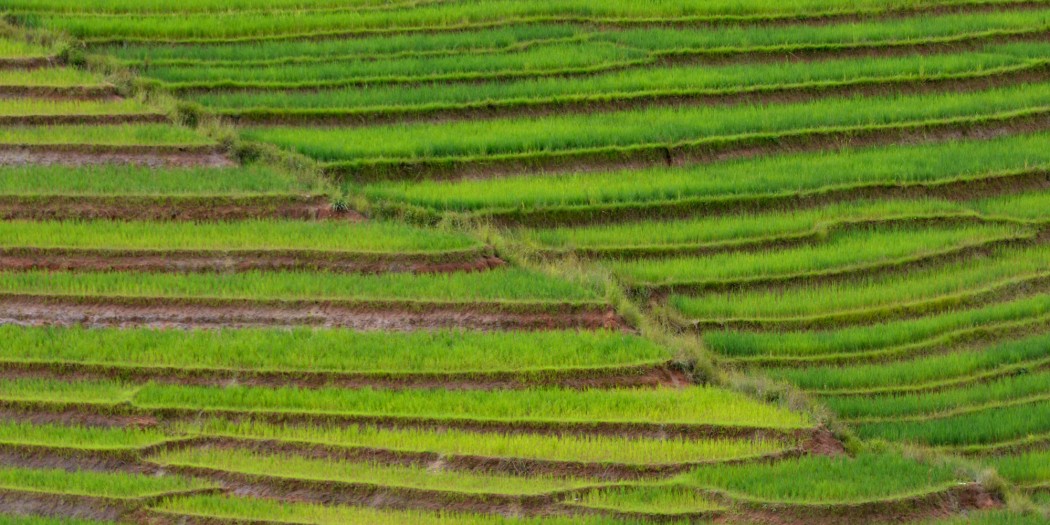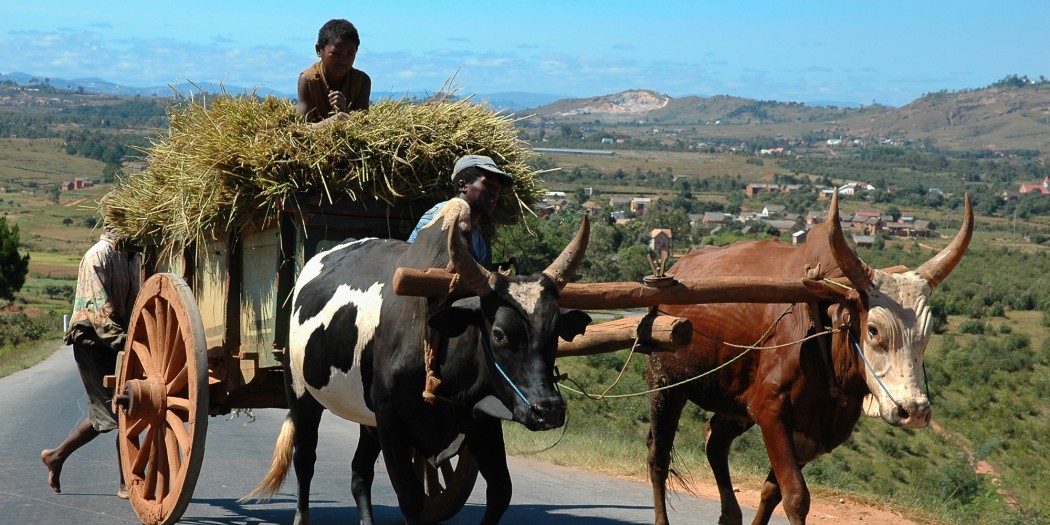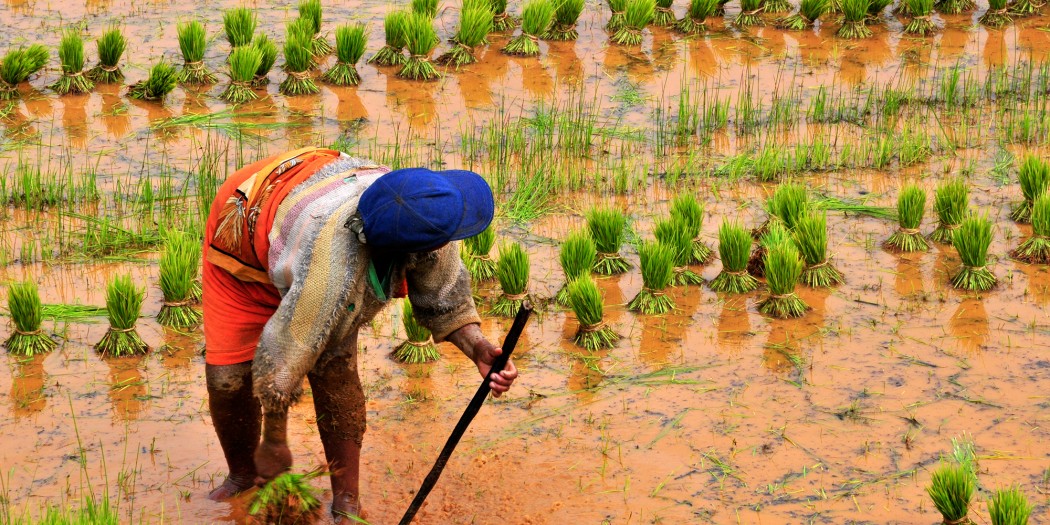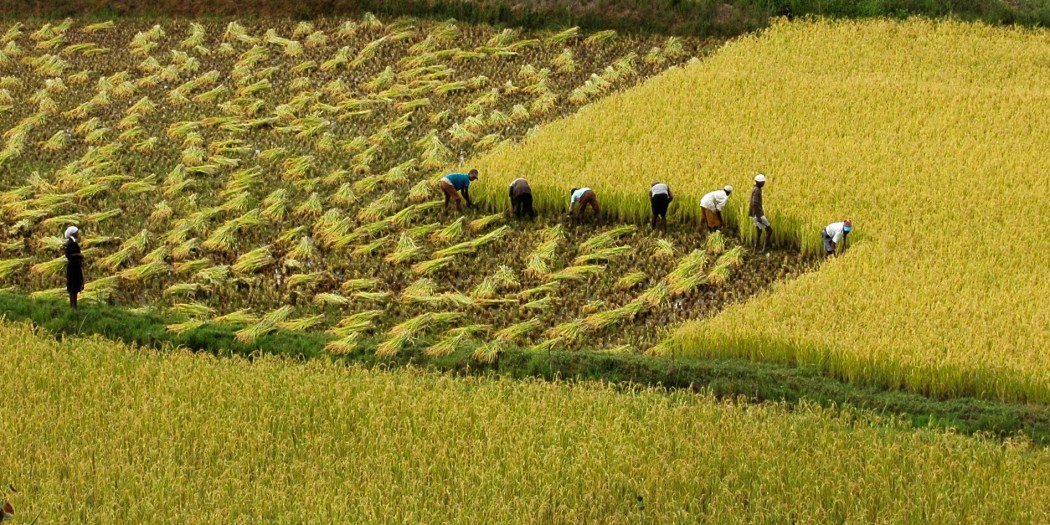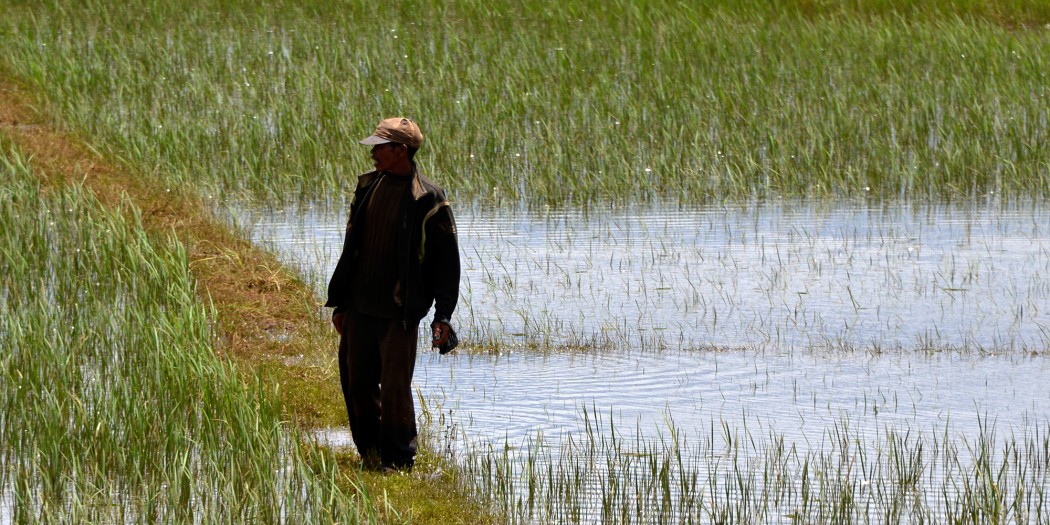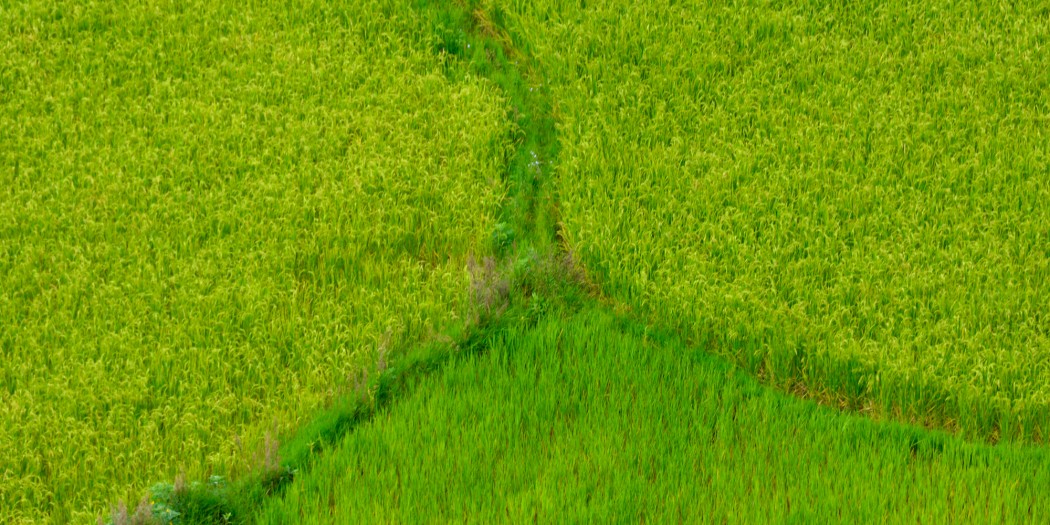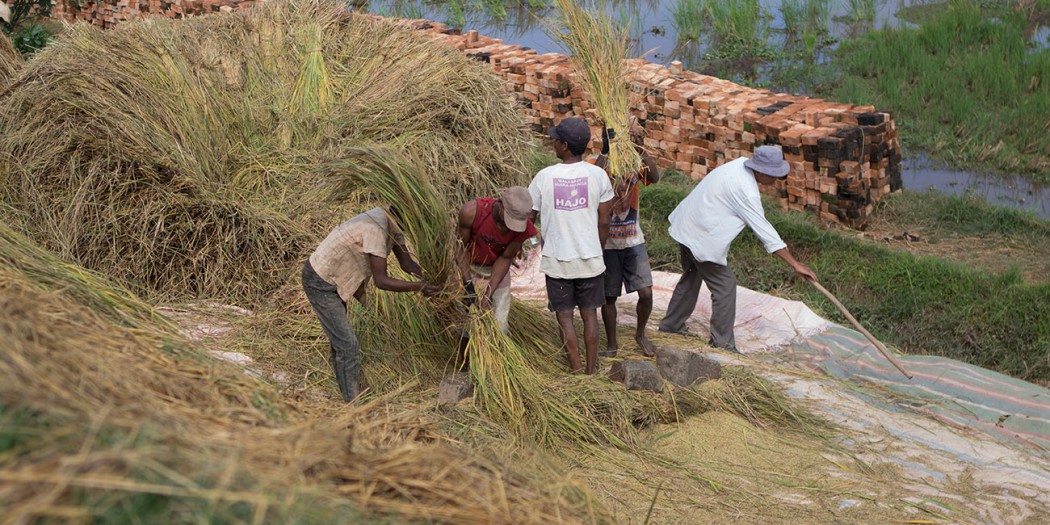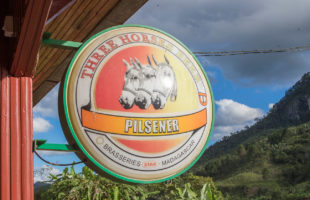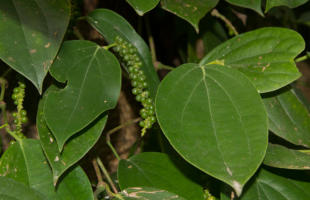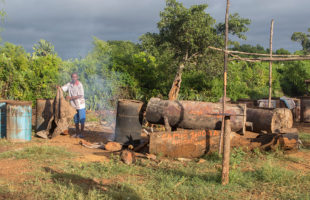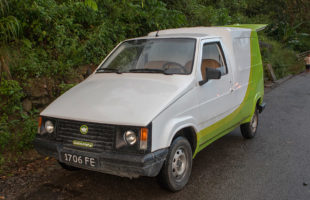Rice, in Malagasy vary, has in hardly any other country such an enormous relevance as in Madagascar. The island has one of the highest per capita consumption of rice worldwiede: On average, each Madagascan eats 120 kg rice per year. Thus Madagascar is in the lead far in front of typical rice cultivation countries like China, which has an average consumption of only 77 kg per person. Only Vietnamese people eat more rice – 140 kg per year and inhabitant.
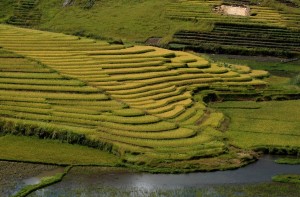
Rice came to Madagascar probably more than thousand years ago, together with the first settlers from Indonesia and Malaysia. King Andriamanelo from the central highlands, crowned in 1540, was the first to organize rice cultivation and installed rice fields to nourish his people. Nevertheless it was not before two more centuries later, that the most famous king of the Merina, Andrianampoinimerina, enacted official rules for rice cultivation and built the first rice storages in the end of the 18th century. Due to his and his son Radama’s I. intensive contacts to Europe, mainly to French and English, he could intensify the terrace cultivation. From the 16th century on, rice of Madagascar even became an export good: Seefarer from Europe exchanged jewelries, weapons and other articles against the staple food. Nosy Boraha (St. Marie), Mahavelona (Foulpointe) and Toamasina (Tamatave) were export bases for a long time, although rice cultivation grew worked much better in the central highlands.
Today, rice is the main part of all three meals of the day in Madagascar: In the morning as potage, for lunch and diner with zebu, chicken or vegetables. Even the rice burned to the ground of the pot is useful: With boiling water, you can make so-called ranovola (in English valuable water), rice water, out of it. People serve it as drink for lunch and diner. A Malagasy saying tells that you will only be sated if you eat enough rice during the day. Basically, rice is a grass, which has many different species. The most cultivated rice is Oryza sativa, of which about 400.000 variants exist worldwide. In Madagascar, the most known and used sorts are Indica and Japonica. Indica variants have long grains (more than 6 mm) and do not stich together after cooking, thus making the rice fluffy. Instead, Japonica variants have short grains and tend to stick together, but do not result in gluey bulks like sticky rice from Asia often does. The long grain, red rice (vary lava) often seen on markets in Madagascar, is richer in nutrients and particularly popular among wealthy Madagascans.
In Madagascar, you distinguish two kinds of rice cultivation: The older and simpler method is the mountain rice. Acreage is made by slash-and-burn agriculture, then people dig small holes by hand into the ground. They sow some rice grains in each hole and cover them with soil. Harvest is rather low with only 800 kg/ha. Additionally, you need rain at regular intervals for this kind of rice cultivation, so the east coast is the main region for mountain rice. Some small fields exist also in the central highlands.
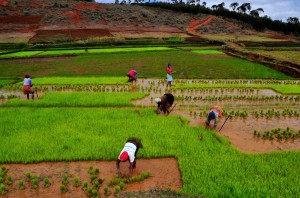
The most common practices cultivation method – and the one you will see everywhere as traveler – is wet rice (horaka). It is cultivated in terraces and watered by complex inlet and distribution systems. You need about 2000 liters of water for one single kilo of rice. This is faced by better harvests with one or two tons of rice per ha. But before harvest comes, there is a lot of work to do: At the end of the rainy season, the soil needs to be ploughed up. This is the men’s task. With a small spade (angidy), they break up the filed bit by bit. The angidy is the only tool used for rice cultivation in Madagascar at all. People owning zebus can let them run through the rice fields to trample the soil. Ploughs could not gain acceptance among Malagasy people until today, you can only see them scatteredly here and there used by wealthy farmers. While the rice field is prepared, women care for seeding the grains. Mostly they use a special planting bed (tanin-ketsa), where the grains germ and grow as young rice seedlings for the first weeks. After 30 to 40 days, the women take the young rice plants from their beds and put them into the prepared rice field. This process is called repiquage. Then it’s time for the men again: They are responsible to water the terraces, repair earth walls and come to an agreement about use of water with their neighbours. The fertilization of the rice plants – they cannot build grains without – is done by the wind.
At the beginning oft he dry season (March to May), the rice comes in all its glory: The former bright green waves have become bright yellow and have grown up to one and a half meters high. Time to harvest! This is a women’s task – rice ears are cut by sickles in bundles and knotted together with leaves. If the women cut enough bundles, they carry the heavy load on their heads home. Now they begin to thresh the ear bundels against stones or specially made wooden constructions, to separate the grains from the straw. Each ear has about 3000 grains. Families who are able to afford cattle, put the bundles on mats and let the zebu walk across. After this long and exhausting work, the grains are dried and can stored for the long term without spoilage.
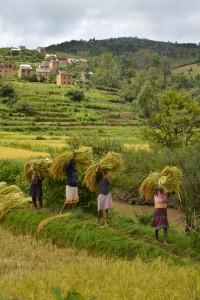
The grains still stick in their husks, but rice is eaten hulled in Madagascar. To husk it before consumption, the women stamp the rice with huge wooden poles in stone bowls. Separating the loose husks from the grain is done by swinging large, flat bowls. Every time the rice soars into the air, the wind takes some husks away, until only the pure, hulled rice is left. One kilo paddy, which is a word for non-hulled rice, yields an average of 660 g hulled rice.
In the 1980ies, French agricultural engineer Henrie de Lalaunié invetend a new method of rice cultivation in his Jesuit monastery in Madagascar, increasing the harvest of one field multiple times. The so-called system for rice intensification (SRI) uses only 1/10 of the usual necessary seed. At an age of less than 15 days, which is rather early, the seedlings are put one by one (instead of bundles) in clear rows (instead of widespread all over the field) on the field. Instead of flooding the field knee-deep with water, it is only provided with enough water to keep the rice plants steadily humid. Weeds are pulled up regularly by hand. All those measures lead to harvests of several tons rice per field without using expensive fertilizer. To popularize his new cultivation method, Lalaunié founded his organization Tefy Saina in 1990. After his death in the middle of the 1990ies, Cornell University supported the distribution of SRI significantly. By now, primarily foreign countries use it for their rice cultivation. In Madagascar, SRI prevails in only one out of four managed rice fields.
The largest rice-growing area of the country has been located for years near Lac Alaotra, Madagascar’s largest inland lake, next to the city of Ambatondrazaka. This is where the largest rice fields of Madagascar with acreage up to 500 ha can be found, and some are even harvested by machines. Hence the area is called “Madagascar’s granary” among local people. Apart from that, you can find rice fields everywhere in the highlands today, as well as along the eastcoast until Madagascar’s north and along a river called Marovoay in the western part of the island.
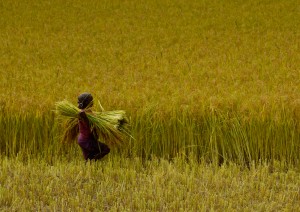
A variety of problems is cause of most Malagasy rice farmers living in bitter poverty. For one, the mostly small rice fields impede higher gains, while an steadily increasing number of people has to subsist on these fields. More than 60% of Madagascar’s rice fields are less than 5 ha in size, some particularly steep slopes are even not a food wide. As a result, the country has been in need to import rice since the 1970ies. In 1982, it reached a sad record of 342.000 tons of imported rice, which covered hardly 15% of demand at that time. Nowadays, import numbers are declining. Most of the imported rice comes from Pakistan, China, Singapore, Thailand, Myanmar and India.
On a long-term basis, the rice terraces monoculture damages the soil. After few years, a rice field is finished. Extensive slash-and-burn agriculture in former forest stands cause erosions and fallow fields you cannot use for anything anymore. Only few regions like the fields around Antsirabe at least introduced alternation of crops. Every few years, gigantic locust swarms afflict mainly Madagascar’s southern highlands. Within some minutes, the ravenous insects devastate whole villages’ means of existence. Induced by such catastrophes, many farmers get into debt to buy seeding material. To earn one or two times a year some money at all, they sell the complete rice harvest immediately after drying instead of storing the rice and waiting for a better market price. Cooperatives or family coalitions to market rice collectively hardly exist.
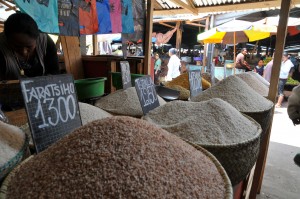
In many places, large concerns monopolize rice regions and let out rice fields on a lease only. The rice farmers then even do not work anymore on their own fields, and are forced to sell their rice for a default price. As a consequence, a paradox trade begins: Many Madagascan farmers sell their high quality rice to large concerns, but cannot keep grains for themselves. In lieu, they buy cheap Asian rice from the market to nourish their child-rich families. Furthermore, the rice fields’ stagnant water are a hygienic problem and nurtures the distribution of bilharziosis.
The big importance of rice cultivation in Madagascar is reenacted easily by numbers: Almost 30% of the gross domestic product is generated by rice. More than 70% of Malagasy people work in agriculture, thereof more than the half on rice fields. The latter make up 40% of the country’s cultivated areas. All Madagascan daily life is characterized by rice. Countless sayings have rice as their topic. If you want to invite someone for diner in Madagascar, the translation of the Malagasy sentence is “inviting to eat rice”. The 10.000 Ariary banknote shows on one side a woman planting rice seedlings. One could continue with this list infinitely, but in the end, there’s one fact left: Rice is extremely important for Madagascar, and probably will remain staple food for a long time.
 MADAMAGAZINE Your Magazine about Madagascar
MADAMAGAZINE Your Magazine about Madagascar
